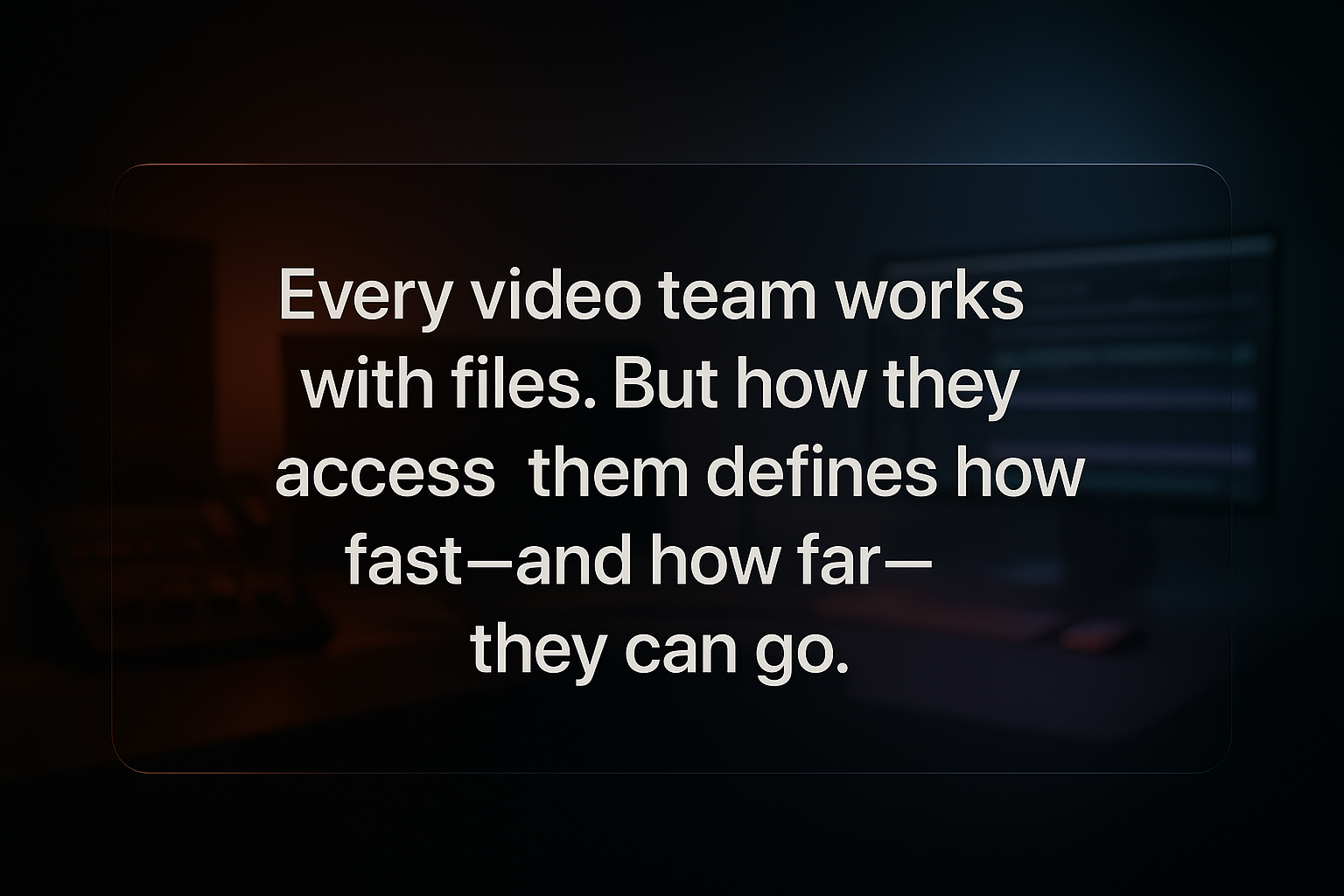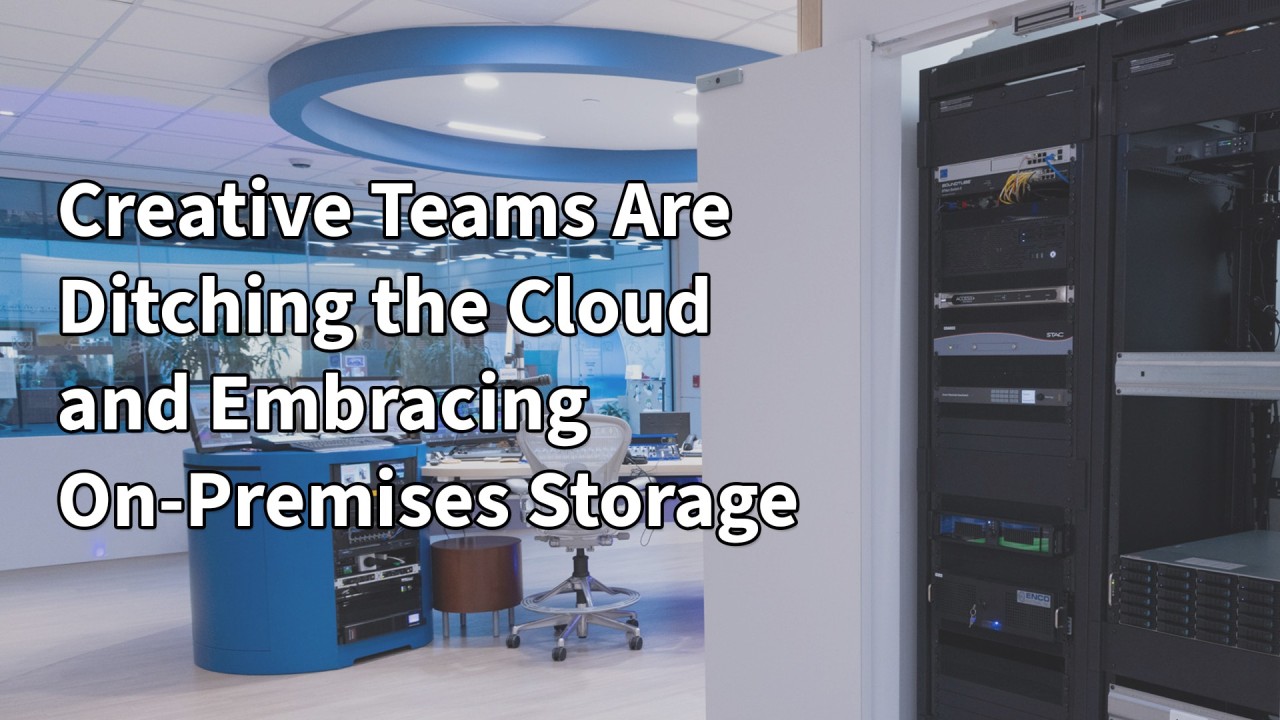
Forget Proxies - Apple's Hidden Feature Enables Seamless Remote Video Editing
How Apple Silicon Macs with macOS Sonoma's high-performance screen sharing are transforming remote video workflows for creative teams.
The Remote Editing Challenge
In the world of video production, remote collaboration has often meant compromise. Editors working from afar typically wrestle with slow file transfers, reduced video quality, and laggy remote desktop tools. High-resolution footage (think 4K HDR) is enormous, and trying to edit it over the internet has traditionally required either creating proxy files or enduring significant latency.
For creative teams without a central office - distributed across cities or even continents - these challenges can severely hamper productivity and creative flow. One luxury hospitality group’s in-house video team found themselves in this predicament. With talented editors spread globally and no central edit suite, they needed a way to give everyone access to the same high-powered editing environment.
The goal was to enable an editor in a hotel room or home office to seamlessly work on 4K footage as if they were on a top-of-the-line workstation in a studio. But the reality was frustrating: VPN logins, clunky remote desktops, shipping hard drives of media… all of it slowed down their storytelling and collaboration.
A Hidden macOS Superpower for Remote Workflows
What if remote editors could work with full-quality video and minimal lag? In late 2023, Apple quietly introduced something game-changing in macOS for Apple Silicon Macs: a High Performance mode for screen sharing.
This isn’t the standard screen sharing we’ve used in the past – it’s a supercharged remote desktop that taps into the hardware video encoding power of Apple’s M-series chips. When enabled between two Apple Silicon Macs running macOS Sonoma (or later), one Mac can remotely control and view another with exceptionally high fidelity and responsiveness.
We’re talking full 4K resolution at 60 frames per second, 4:4:4 color accuracy, and even support for HDR video reference mode - essentially a true-to-life window into the remote machine. Remarkably, it achieves this with a modest bandwidth requirement: roughly 75 Mbps for a 4K HDR display. (For comparison, streaming uncompressed 4K video could require gigabits per second!)
Apple’s new mode leverages the Apple Silicon media engines to compress the screen visuals so efficiently that high-end remote editing is finally possible over a typical broadband connection. In short, this under-the-radar macOS feature means remote editors can see and hear their projects in real-time and full quality, nearly as if they were sitting in front of the actual machine.
Combining Apple Silicon with a Private Cloud Workflow
Technology alone is great, but real transformation happens when you combine the right tools into a cohesive workflow. That’s exactly what the hospitality group’s team did. They partnered with DigitalGlue’s creative.space – a provider of high-performance media storage – to set up a private cloud editing environment tailored to leverage Apple’s new capability.
In DigitalGlue’s secure data center, they installed two Mac Studio workstations (Apple Silicon) and connected them via a blazing-fast 10 GbE network to a creative.space storage server. This meant the Macs had high bandwidth and local access to all the video files on shared storage, just like workstations in a traditional post facility.
Editors around the world could then screen share into these Mac Studios over the internet, using macOS’s high-performance mode to remotely control the machines at full speed and quality.
How does it work in practice? Each remote editor has their own Apple Silicon Mac (like a MacBook Pro) as their personal computer. Through a secure VPN, they connect to the data center and launch the built-in Screen Sharing app to control one of the Mac Studios. Instantly, they see the Mac Studio’s desktop in crystal clarity on their own screen.
From there, it’s business as usual: they can open up DaVinci Resolve or Adobe Premiere Pro on the remote Mac and edit away, except now all the heavy lifting happens on the Mac Studio in the data center. That Mac Studio has a 10GbE pipe straight into the creative.space storage, so it can pull up 4K raw footage in a snap.
The editor’s keystrokes and mouse movements are sent over the network, and the Mac Studio streams back a high-quality video feed of its display. Apple’s high-performance mode even transmits stereo audio and reference color, so the editor hears all the project’s sound and sees accurate colors while they work.
The result: from the editor’s perspective, it feels like the Mac Studio is right in front of them, even though it might be a thousand miles away.
Real-World Results: Editing from Anywhere
For the hospitality group’s creative team, the difference was night and day. Instead of waiting hours to download footage or create proxy files, an editor could sit down in a hotel room and start cutting the latest 4K resort video immediately – tapping directly into the Mac Studio over screen sharing.
One editor might be color grading a luxury hotel promo in HDR using DaVinci Resolve on the Mac Studio while sitting with a MacBook in a completely different country. Another could be assembling a marketing video in Premiere Pro from a home office. Both reported that the experience felt nearly local: scrubbing through high-bitrate footage was smooth, edits and color adjustments happened without the usual remote lag, and playback was in real-time.
The low latency of the high-performance mode made precise tasks (like trimming to music beats or fine-tuning color grades) perfectly feasible, and the image quality was so high that what they saw on their screen was an accurate representation of the final output. This was critical for a brand that demands polish; the team could do detailed color correction and quality review remotely, with confidence.
Perhaps most importantly, this workflow completely changed their way of working. With no central office, editors now work from wherever they are happiest and most productive – whether that’s a suite in one of the company’s hotels, a home edit bay, or even on the road while traveling. They’re no longer tethered to a physical studio.
The media and projects all live on the creative.space storage back at the data center, so whenever someone needs to contribute footage or access files, they simply use creative.space’s tools to mount the storage on their desktop or upload via the web app.
For instance, a camera crew in one country can upload freshly shot content through the creative.space web portal, and minutes later, an editor across the globe can access that same footage on the remote Mac Studio. It’s a global shared workspace that exists in the cloud (privately), and it enabled the hospitality brand to produce videos faster and more collaboratively than ever before – all without anyone setting foot in a traditional edit suite.
Behind the Scenes: Key Tech Ingredients
So, what made this high-performance remote workflow possible? Here are the key ingredients that came together in this solution:
Apple Silicon Macs (macOS Sonoma or later)
Both the host and client machines are Apple Silicon-based (e.g., M1/M2 chips) and run the latest macOS. The high-performance screen sharing mode is only available when both computers are Apple Silicon Macs on macOS 14+. In this case, Mac Studios act as the host workstations, and each editor uses an Apple Silicon Mac laptop as the client.
High-bandwidth, low-latency network
A reliable, fast network connection is vital. Apple recommends around 75 Mbps of bandwidth for a 4K screen share and a consistent low-latency link. The team uses wired 10 GbE in the data center and connects remotely over fiber internet; editors log in via creative.space’s VPN for security.
Even over Wi-Fi, modern home internet (cable/fiber) can handle the ~50–80 Mbps stream, but a wired connection is ideal for stability.
Co-located Mac Studio servers
Two Mac Studios reside in DigitalGlue’s private data center as the “remote editing rigs.” They’re loaded with the necessary CPU/GPU power and are each dedicated to a single remote user at a time (macOS’s high-performance mode allows one session per Mac).
Having two machines means two editors can work concurrently, or one can serve as a backup. These Macs are directly networked to the storage at 10 GbE speeds, ensuring they can play and render high-resolution media without delay.
High-performance shared storage (creative.space)
A creative.space storage server provides the central hub for all media assets. This is a media-optimized NAS/storage solution connected via 10 GbE, capable of streaming multiple 4K video feeds.
All project files and raw footage sit on this shared storage, so the Mac Studios can access media instantly and editors are always working on the same synchronized data. creative.space’s platform also offers an intuitive desktop mounting and web interface for file management, which the team leverages for uploading new media and organizing projects.
Professional editing software
The remote Mac Studios have all the pro applications the team needs: DaVinci Resolve, Adobe Premiere Pro, and others. Editors launch these apps on the remote Mac just as they would locally.
Because the screen sharing transmits at a high frame rate and full color, the UX of these apps remains smooth and color-accurate. Even playback of 4K timelines with effects is possible since the heavy compute is done on the Mac Studio.
The editors can also collaborate by sharing project files or sequences on the creative.space storage, just as they would in an office setting.
Benefits: Flexibility, Speed, and Creative Freedom
This innovative setup delivered many benefits to the creative team, solving their initial challenges in a big way. First and foremost, flexibility became a given – team members can edit from anywhere, on their schedule, without worrying about access to a “powerful machine” or files.
The workflow also dramatically improved speed and efficiency: no more waiting for large file transfers or overnight shipments of hard drives since everything is accessible in real-time on the central storage. Deadlines that once seemed daunting became manageable when an editor could jump in instantly to make a change or review a render from wherever they were.
Quality-wise, there was zero compromise. The high-performance screen sharing ensured that even when working remotely, editors were always seeing a high-quality, color-accurate picture of their footage. This is crucial for tasks like color grading and fine editing, and it gives the team confidence that what they deliver will look exactly as intended.
Despite the high fidelity, the solution is bandwidth-efficient – keeping the stream around the tens of Mbps range, which is well within reach for standard internet connections (a far cry from trying to download hundreds of gigabytes of raw video to a local machine).
Meanwhile, all the heavy data (the 4K video files) stays secure on the creative.space server in the data center. This centralization adds a security benefit: content is not duplicated across multiple laptops or drives; it remains in a controlled environment with user access managed through creative.space’s system.
By combining Apple’s screen sharing technology with a robust private cloud setup, the team unlocked new creative freedom – they can focus on storytelling and editing, not IT logistics or workarounds. It’s the kind of freedom that lets creativity flourish because the technology fades into the background.
Embracing the Future of Remote Collaboration
What once seemed like a distant dream for video professionals – true high-end remote editing – is now a reality. Apple’s under-the-radar HDR screen sharing upgrade and solutions like creative.space’s hosted storage/workstation platform have converged to remove the old barriers.
The luxury hospitality group in our case study is already reaping the rewards: faster turnarounds, happier editors, and the ability to tap talent from anywhere in the world without relocating a single person. And they’re not alone.
For video teams grappling with similar remote workflow challenges, this is a compelling glimpse into what’s possible. It might be time to rethink what “working together” looks like in the post-production world. With the right combination of tools, you can have a distributed team working in sync on high-bandwidth projects without sacrificing quality or speed.
Consider exploring these new technologies and approaches if any of this resonates with you. Imagine empowering your editors to work from wherever they feel most creative while still accessing a supercharged editing rig in the cloud – that’s now within reach.
The bottom line: Remote collaboration in video production doesn’t have to mean settling for less. By leveraging Apple Silicon Macs and high-performance screen sharing, along with a private cloud storage/workstation solution like creative.space, you can give your team the flexibility, speed, and creative freedom to do their best work from anywhere. The tools are here – the next step is adopting them and ushering in a new era of collaboration. Is your team ready to edit from anywhere?
About the Author: Tim Anderson is CEO/CTO at DigitalGlue and creative.space, where he leads the development of innovative storage solutions for creative teams.


